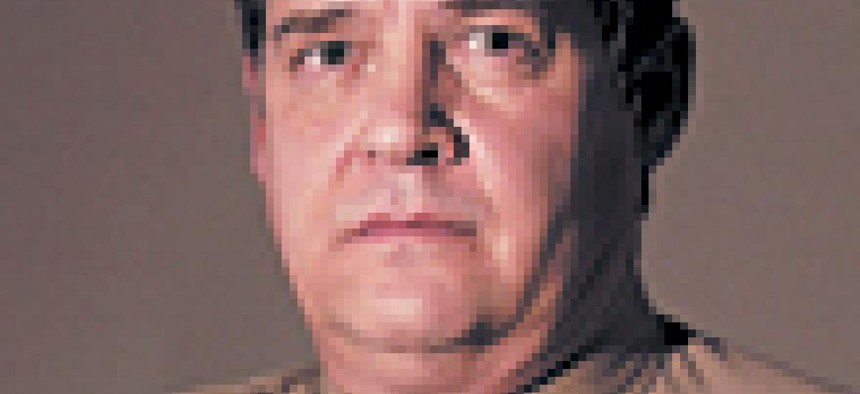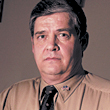It's nice to collaborate

Ron Simmons became a believer in Internet collaboration in 1998 while looking for a way to track research funded by the Federal Aviation Administration's human factors office.
Ron Simmons became a believer in Internet collaboration in 1998 while looking for a way to track research funded by the Federal Aviation Administration's human factors office. "We had 98 projects going" at institutions in New Zealand, Europe and the University of Illinois, said Simmons, the office's knowledge officer. "I was trying to avoid custom software development." The human factors office studies physical and physiological effects of aviation on pilots and air traffic controllers.Simmons settled on eRoom digital workplace software from eRoom Technology Inc. of Cambridge, Mass. "We found we had six different groups doing research on human fatigue," he said. "Until we put it in eRoom, there was no way of knowing."Overlapping research programs are not necessarily bad, he said, but without proper management, they waste effort. "You're constantly reinventing even simple things," he said.Simmons became an evangelist for eRoom, promoting its use in the Standard Terminal Automation Replacement System program office in late 2000."I was trying to introduce the concept of knowledge management," he said.STARS program manager Alan Feinberg said he was not looking for knowledge management per se, but "just wanted to make things easier on everybody. We were having a heck of a lot of meetings. We had embarrassing situations where we were faxing 50-page documents while 25 people were in a room waiting for a meeting to begin."Early versions of STARS are operational, he said, at El Paso International Airport in Texas and Hancock International Airport in Syracuse, N.Y. The first full version, FS-1, which lacks some interface features planned for the final version, is in use at Eglin Air Force Base, Fla., and McGuire Air Force Base, N.J. The El Paso and Syracuse airports will upgrade soon to FS-1, and Feinberg said work is under way on FS-2. A national release of FS-2 will begin late this year, and implementation at nearly 200 air traffic control centers will continue through 2008. Raytheon Co., Lexington, Mass., is the STARS prime contractor. TRW Inc., Cleveland, provides onsite support.The STARS program office turned to eRoom primarily as a document repository. In virtual meeting rooms that Simmons set up on the agency's eRoom server, documents are immediately available to users wherever they are.Simmons called e-mail "sporadically quick" for document review and approval between Raytheon headquarters in Boston and the STARS program office. He said it used to take about four hours "on a good day. With eRoom, it's instantaneous."The product's biggest plus is a short learning period. "In about 15 minutes I was using it at a very useful level," Feinberg said.ERoom runs under Microsoft Windows NT or Windows 2000 with Microsoft Internet Information Server. Users can view, track, edit and manage documents and other files by browser, regardless of format."We are file agnostic," said John Sheehan, eRoom's director of technical solutions.Users also can share applications, do white-boarding and have text chats. Documents are routed through a work-flow manager that alerts users when material is awaiting approval.Sheehan said the tool requires a minimum of attention from the IT staff beyond installing the server software, assigning a Web address and naming a facility administrator, who sets up the virtual rooms, designates users and creates access profiles.Access to each eRoom is by password. Assigned users must have read and write permissions for each file or file type. All eRoom traffic comes through dedicated server ports, and the server can be behind a firewall for additional security.The eRoom server runs in a so-called demilitarized zone at FAA's Washington headquarters ? behind the firewall but not connected to the local area network."If we were all working in the same building, we would have a LAN," Simmons said, but the wide distribution of users makes Web access more practical. Hosting it in a DMZ makes it secure."You don't have to be in your office," Feinberg said. "You can use it from home."ERoom also gets around restrictions on size of e-mail attachments, and it provides a central repository. Simmons estimated the FAA has saved more than $46,000 on slide presentations by having an archive of material that is easy to search and reuse.

William Jackson is a staff writer for Government Computer News. He can be reached at
wjackson@postnewsweektech.com

Without proper management, Ron Simmons said, overlapping research projects at FAA wasted effort. "You're constantly reinventing even simple things."
William Jackson is a staff writer for Government Computer News. He can be reached at
wjackson@postnewsweektech.com